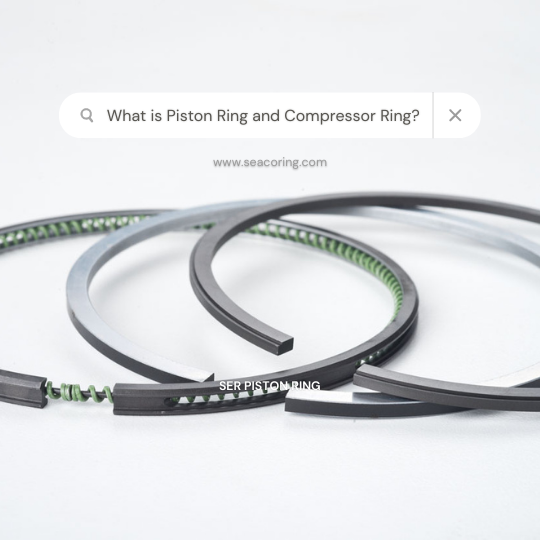NEWS
What is Piston Ring and Compressor Ring?

What is Piston Ring?
The piston rings are a critical component of an engine that serve four main roles.
Maintaining Gas Compression
When a piston makes contact with the cylinder wall, piston rings help in maintaining consistent gas compression. Piston rings are used to seal the cylinder, preventing combustion gas produced during the ignition process from escaping through the opening between the piston and cylinder.
Leaks in combustion gas systems imply that the engine may not produce enough power, resulting in increased fuel consumption. This is detrimental to both the economy and the environment.
Lubrication Control
Often, piston rings produce just the thinnest coating of lubricating oil to prevent them from scratching. Numerous thousand piston movements occur every minute since gas ignition occurs numerous times throughout an engine's operation. A small quantity of oil is sprayed on the pistons to ensure smooth operation and to minimize metal-on-metal contact. The piston rings control the flow of oil.
Transfer of Heat
It is possible for the engine to be destroyed if the piston gets too hot during operation. The temperature of the piston rises to about 300°C. As a result, it is essential to discover a method to alleviate the strain that has accumulated through time. Piston rings are used to disperse heat.
Supporting Function
By preventing the piston from smashing against the cylinder wall, piston rings safeguard it.
If the piston tilts in the cylinder, it may cause damage to internal components and ultimately result in the engine failing. When the piston rings are intact, the pistons move freely inside the cylinder.
What is Compressor Ring?
Compressor rings are utilized to seal the cylinder and combustion chamber, preventing any gas from escaping before they perform their function. Lubrication and cooling are achieved by moving a small amount of oil up and down the cylinder through the compressor ring. Compressor rings are mostly composed of grey cast iron.
Working process to know about:
Because piston rings are responsible for maintaining cylinder pressure, they must be flexible enough to push evenly against the cylinder walls.
When restricted gases impinge on rings nearest to the combustion region during compressor and combustion, they experience a pressure increase. Gases enter behind the top ring and push it down towards the groove's base due to the friction created by the ring between the cylinder and groove bottom.
With each succeeding compressor ring, only gas that has previously passed through the gap of the preceding ring may reach the second compressor ring, resulting in a gradual decrease in the gas pressure on the second compressor ring.
